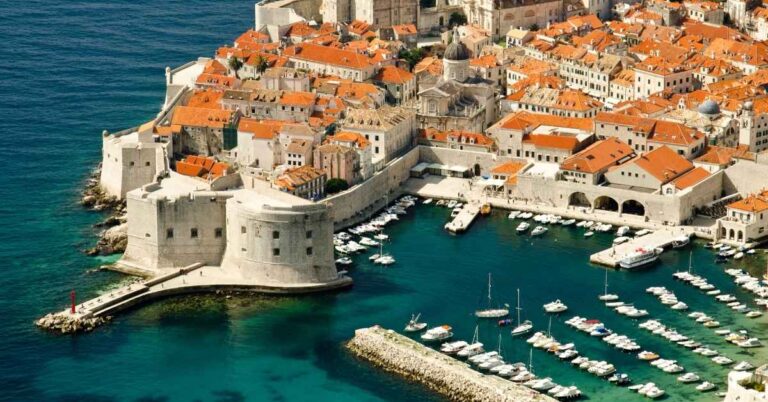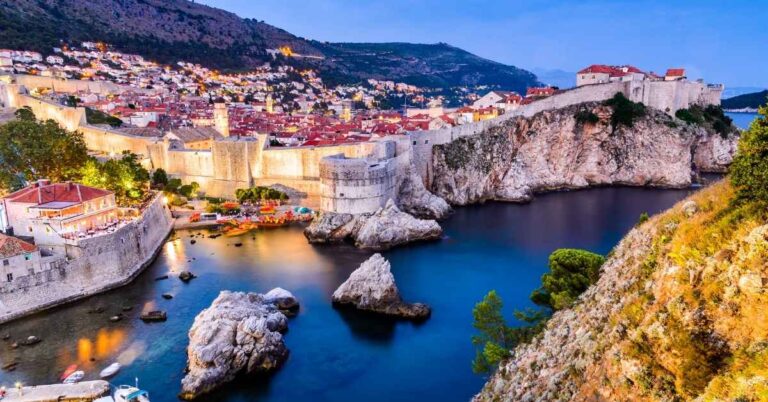Croatia is one of Europe’s most stunning destinations, known for its breathtaking Adriatic coastline, medieval towns, and picturesque islands. While the country draws millions of visitors each summer, there’s something uniquely magical about visiting Croatia in the off-season. Traveling during the quieter months offers a different perspective of the country, allowing you to experience its beauty without the crowds. Whether you want to explore Croatia’s rich history, enjoy its natural wonders, or relax by the sea, visiting in the off-season can offer a more peaceful and authentic experience.
This article’ll explore the best time to visit Croatia during the off-season, including travel tips and the advantages of traveling outside peak tourist times. From mild weather to fewer crowds, we’ll show you why the off-season may be the perfect time to discover Croatia’s hidden gems.
Why Consider Off-Season Travel to Croatia?
When most people think of Croatia, they envision long summer days, packed beaches, and bustling cities. However, the off-season typically includes spring and autumn shoulder seasons, providing an entirely different experience. The country retains its beauty and charm, but without the overwhelming influx of tourists. Here are some reasons why off-season travel to Croatia is an attractive option:
- Lower Prices: Off-season travel often means lower prices for accommodations, flights, and activities, making Croatia more affordable.
- Less Crowded: Popular tourist spots like Dubrovnik and Split can get quite crowded in summer. Traveling during the off-season allows you to explore these places with more space and peace.
- Milder Weather: While Croatia can get hot in the summer, spring and autumn offer more temperate weather, which is ideal for sightseeing and outdoor activities.
- Authentic Experience: With fewer tourists, you can experience Croatia like a local, enjoying a more relaxed pace and genuine interactions.
When is the Off-Season in Croatia?
The off-season in Croatia generally refers to the months outside of peak summer, which lasts from June to August. The most popular off-season periods are:
- Spring (March to May): Spring is a great time to visit Croatia as the weather begins to warm up, flowers bloom, and the country starts to come alive with festivals and events. It’s less crowded than summer and perfect for sightseeing and outdoor activities.
- Autumn (September to November): Autumn is another fantastic off-season period. The summer crowds have thinned, and the weather is still pleasant, particularly in September and October. The fall foliage in Croatia’s national parks is stunning, making it an ideal time for nature lovers.
Weather Considerations: What to Expect During the Off-Season
Spring Weather in Croatia
Spring is an excellent time for off-season travel to Croatia, especially in April and May. The weather is generally mild, with temperatures ranging from 10°C (50°F) to 20°C (68°F), making it comfortable for exploring cities and hiking. While there may be occasional rain showers, the weather is pleasant enough to enjoy outdoor activities without the summer heat.
- Coastal Areas: In coastal cities like Split, Zadar, and Dubrovnik, the temperatures are warmer, with occasional rainfall. The sea may still be too cold for swimming, but the weather is perfect for sightseeing.
- Inland Areas: The inland regions, such as Zagreb and Plitvice Lakes, may be cooler in early spring, but they offer a peaceful atmosphere for visitors looking to avoid the crowds.
Autumn Weather in Croatia
Autumn is another excellent option for off-season travel. The weather in September and October is still warm, especially along the coast, with temperatures ranging from 15°C (59°F) to 25°C (77°F). By November, the weather begins to cool, but it’s still possible to enjoy outdoor activities.
- Coastal Regions: In cities like Dubrovnik and Split, pleasant temperatures and comfortable evenings are still common. The sea is warmer than in spring, making it a good time for swimming and water activities.
- Inland Areas: The weather in inland regions is cooler, and the landscapes transform as the autumn colors take over the national parks and forests.
Off-Season Benefits: Why It’s Worth It
Lower Costs and Better Deals
One of the biggest draws of off-season travel is the savings. Hotels, flights, and tours are significantly cheaper during the off-season. Accommodations, particularly in tourist hotspots like Dubrovnik, are more affordable, and you may be able to secure upgrades or special deals that wouldn’t be available during peak season. This is an excellent opportunity to experience luxury on a budget, whether staying in a boutique hotel or dining at top-tier restaurants.
Fewer Tourists, More Space
During the peak summer season, Croatia’s most famous attractions, such as the city walls of Dubrovnik or the Plitvice Lakes, can become very crowded. However, visiting in the off-season means fewer tourists, allowing you to explore these sights without the hassle of large crowds. You can enjoy a quieter, more relaxed experience, whether walking through the streets of Split, admiring the views from the Dubrovnik city walls, or enjoying a peaceful boat ride around the islands.
Better Access to Local Experiences
With fewer tourists, you’re more likely to interact with locals, experience their everyday lives, and get a more authentic feel for the country. You’ll find it easier to secure reservations at popular restaurants and may even be invited to events or gatherings typically overcrowded during the summer months.
Best Off-Season Destinations in Croatia
Dubrovnik: The Pearl of the Adriatic
Dubrovnik is a must-visit destination in Croatia, but the summer crowds can make it difficult to enjoy its charm. Visiting in the off-season allows you to experience Dubrovnik’s iconic Old Town, its ancient city walls, and the beautiful views from Mount Srd without the overwhelming crowds. The weather in autumn is still pleasant, and the city’s narrow streets and charming cafes feel more intimate.
Split: The Heart of the Dalmatian Coast
Split is another popular destination, known for its Roman architecture, including Diocletian’s Palace. While the summer months are packed with tourists, visiting in spring or autumn allows you to enjoy the historical sites and lively atmosphere without the sweltering heat or throngs of visitors. The nearby islands, such as Hvar and Brač, are also more enjoyable during the off-season when the weather is mild and the crowds are fewer.
Plitvice Lakes National Park: Nature at Its Best
One of Croatia’s most famous natural attractions, Plitvice Lakes National Park, is even more magical during the off-season. The park’s waterfalls, turquoise lakes, and surrounding forests are stunning in spring and autumn. The fall foliage adds a spectacular layer of color to the scenery, and you can explore the park at a leisurely pace without the high-season crowds.
Zadar and Šibenik: Hidden Gems on the Adriatic Coast
Zadar and Šibenik are less crowded alternatives to Split and Dubrovnik, making them perfect for off-season travel. With its Roman and Venetian heritage, Zadar offers attractions like the Sea Organ and the Roman Forum. Šibenik, with its medieval charm and proximity to Krka National Park, provides an opportunity to explore Croatia’s history and natural beauty without the tourist masses.
Istria: Wine and Food Lovers’ Paradise
In northern Croatia, Istria is renowned for its food, wine, and medieval hilltop towns. Visiting during the off-season allows you to experience the region’s olive groves and vineyards without the crowds. Autumn, in particular, is a great time to visit Istria for its truffle season, and you can enjoy local wines and delicious cuisine in a more relaxed atmosphere.
What to Pack for Off-Season Travel in Croatia
Packing for the off-season in Croatia requires consideration of both mild weather and occasional rain. Here’s what to bring:
- Comfortable Clothing: Light layers are used for spring or warmer clothing on cooler autumn days. Be sure to pack comfortable shoes for walking and exploring.
- Rain Gear: A light waterproof jacket or umbrella is a good idea, especially if you visit in the spring when rain showers are common.
- Swimwear: Even in the off-season, you might enjoy a swim in the Adriatic, particularly in autumn when the sea is still warm.
- Sunscreen: The sun can still be intense, so don’t forget sunscreen, especially if you plan to spend time outdoors.
How to Get Around Croatia During the Off-Season
Getting around Croatia is relatively easy, and transportation is just as convenient during the off-season.
- Car Rentals: Renting a car is a great way to explore Croatia quickly. Roads are less crowded during the off-season, making for a more comfortable driving experience.
- Buses: Croatia has an efficient bus system that operates year-round. Buses are an affordable and convenient way to travel between cities and regions.
- Ferries: While ferry services to the islands are less frequent during the off-season, they are still available, and the islands are less crowded, offering a more peaceful visit.
Conclusion
Croatia is a year-round destination, and the off-season offers numerous advantages for travelers looking for a quieter, more affordable, and authentic experience. Whether you visit in the spring or autumn, you can enjoy the country’s historical sites, stunning landscapes, and charming towns without the crowds. With lower prices, fewer tourists, and mild weather, the off-season is an ideal time to explore all Croatia offers.
FAQs
Q1: What is the best time to visit Croatia for good weather and fewer tourists?
- The best time is during the shoulder seasons of spring (April to June) and autumn (September to October), when the weather is pleasant and crowds are thinner.
Q2: Is it possible to swim in Croatia in the off-season?
- Yes, particularly in the autumn, when the sea is still warm enough for swimming, especially along the coast.
Q3: Are many tourist attractions closed during the off-season in Croatia?
- Most major tourist attractions are open year-round, though some seasonal activities, like specific boat tours, may be limited in the off-season.
Q4: How cold does it get in Croatia during the off-season?
- In the spring and autumn, temperatures can range from 10°C to 25°C, depending on the region, so it’s usually mild but cooler in the evenings.
Q5: How do I get to the Croatian islands in the off-season?
- Ferries still operate to the islands in the off-season, but services may be less frequent than during summer.








